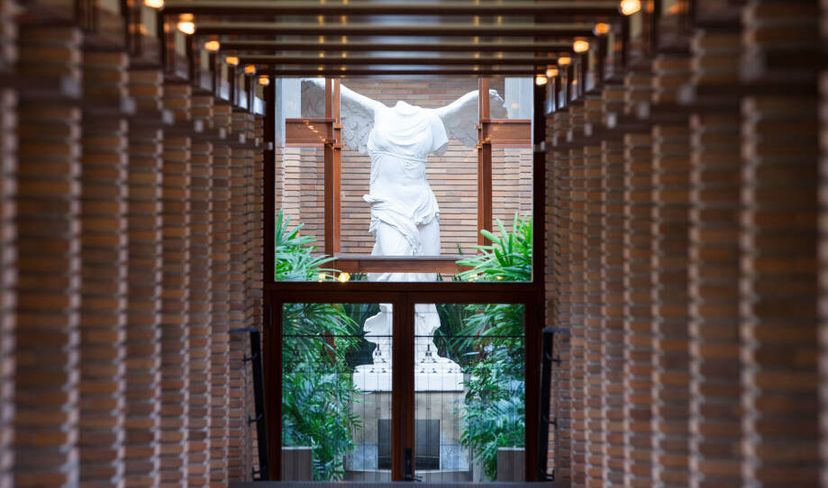
Architect Frank Lloyd Wright was a leader in the organic architecture and Prairie School movements, designing more than 1,000 structures around the world from the late 1880s through the late 1950s. Thanks to his designs, he was named “the greatest American architect of all time” by the American Institute of Architects in 1991. Fans of Wright can view five of his works – old and new – with a visit to Buffalo, New York.
Wright’s work came to the Buffalo area via Oak Park, Illinois, where he lived while working for the Chicago firm Adler & Sullivan. Darwin D. Martin, an executive with the Larkin Soap Company in Buffalo, went to Oak Park to visit his brother and returned to Buffalo to convince the Larkin board of directors to commission Wright to design their new office building. Unfortunately, the Larkin Company Administration Building, completed in 1903, was destroyed in 1950, but many of Wright’s other works live on.
Advertisement
1. Darwin Martin House
While Wright was in Buffalo, Martin commissioned him to build a residential complex located at 125 Jewett Pkwy. in Buffalo. Designed and built from 1903-1905, the Darwin Martin House is considered one of his finest Prairie period designs. The complex later fell into disrepair, with three of the original five buildings being demolished, until the Martin House Restoration Corporation was established to raise funds for restoration projects in 1992. Restorations continue, and tours of the complex are offered often, with a number of other events taking place during the year.
2. Graycliff Estate
Graycliff was designed and built for the Martin family from 1926-1931, the last home designed by Wright in the Buffalo area. Located at 6472 Old Lake Shore Rd. in Derby, the property was later sold to an order of Roman Catholic priests called the Piarist Fathers, who used the home as their motherhouse for nearly 50 years; they altered the building and the property for their own use during this time, leaving little of Wright’s original vision. They put the complex up for sale in 1997, receiving just one offer from a developer who planned to tear it down in favor of condominiums; members of the public got together in an attempt to save Graycliff, and the Graycliff Conservancy was born and succeeded in saving the estate. Weekend tours are offered throughout the year.
3. Blue Sky Mausoleum
The Mausoleum is a “new” Wright piece that was also commissioned by Martin as a family plot and designed between 1925 and 1928; in 2004, it was finally built in the place it was originally intended to be: Forest Lawn Cemetery – which is a place to explore all on its own – located at 1411 Delaware Ave. in Buffalo.
4. Fontana Boathouse
The design for the boathouse was in a 1910 portfolio Wright traveled to Europe with, and was originally designed for the University of Wisconsin Boat Club; it was finally built in Buffalo in 2007 after $5.4 million was raised for its construction. It is located at the foot of Porter Ave. next to the West Side Rowing Club, and is open for tours, and can be rented for special events.
Advertisement
5. The Filling Station at the Pierce-Arrow Museum
Originally designed in 1927 for the corner of Michigan Ave. and Cherry St. in Buffalo, this unique filling station – featuring gravity-fed gas distribution and a second-story observation room with fireplace – was completed in 2014 as an addition to the Buffalo Transportation/Pierce-Arrow Museum, located at 263 Michigan Ave. in downtown Buffalo. Hours at the Museum vary by month, and the Filling Station is included with admission to the Museum.
Advertisement